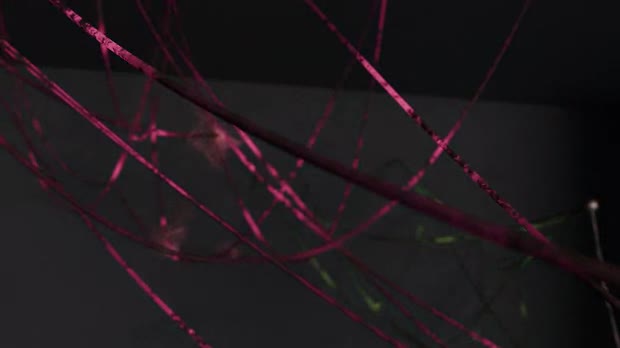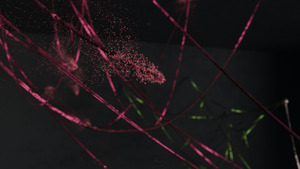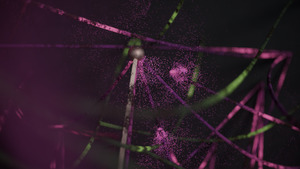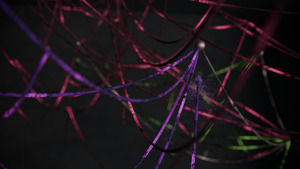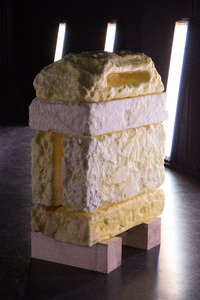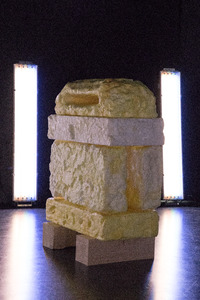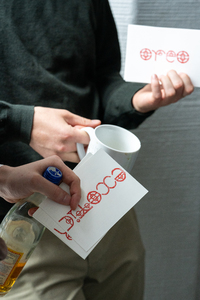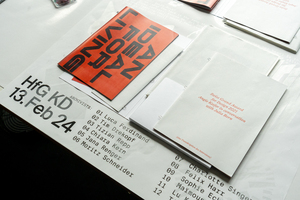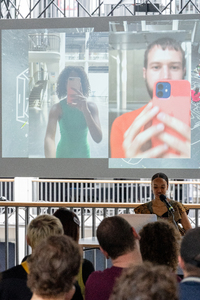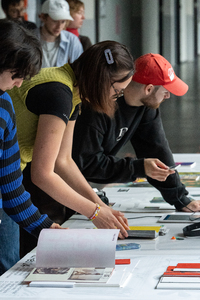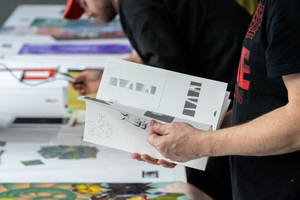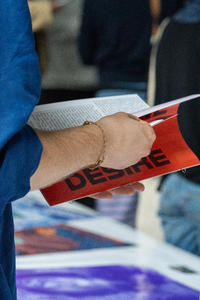"Druckerzeugnisse der HfG"
| Begriff | Druckerzeugnisse der HfG |
| Metakey | Freigabe Nutzung HfG (rights:usage_hfg) |
| Typ | Keyword |
| Vokabular | Rechte |
1592 Inhalte
- Seite 1 von 133
Known Unknown
- Titel
- Known Unknown
- Titel
- Known Unknown
- Urheberrechtshinweis
- Chelsea Kim, Josephine Leicht
- Rechtsschutz/Lizenz
- Freigabe Nutzung HfG
- Medienersteller/in
- Beziehung/Funktion
- Importiert am
- 06.07.2025
- Übergeordnete Sets
- 1
Known Unknown
- Titel
- Known Unknown
- Titel
- Known Unknown
- Urheberrechtshinweis
- Chelsea Kim, Josephine Leicht
- Rechtsschutz/Lizenz
- Freigabe Nutzung HfG
- Medienersteller/in
- Beziehung/Funktion
- Studiengang
- Importiert am
- 24.06.2025
- Übergeordnete Sets
- 1
Known Unknown
- Titel
- Known Unknown
- Titel
- Known Unknown
- Urheberrechtshinweis
- Chelsea Kim, Josephine Leicht
- Rechtsschutz/Lizenz
- Freigabe Nutzung HfG
- Medienersteller/in
- Beziehung/Funktion
- Studiengang
- Importiert am
- 24.06.2025
- Übergeordnete Sets
- 1
Known Unknown
- Titel
- Known Unknown
- Titel
- Known Unknown
- Urheberrechtshinweis
- Chelsea Kim, Josephine Leicht
- Rechtsschutz/Lizenz
- Freigabe Nutzung HfG
- Medienersteller/in
- Beziehung/Funktion
- Studiengang
- Importiert am
- 24.06.2025
- Übergeordnete Sets
- 1
Kenotaph für die Bienen
- Titel
- Kenotaph für die Bienen
- Autor/in
- Kategorie
- Titel
- Kenotaph für die Bienen
- Titel (en)
- Cenotaph to the bees
- Urheberrechtshinweis
- © Jannis Zell
- Rechtsschutz/Lizenz
- Freigabe Nutzung HfG
- Medienersteller/in
- Beziehung/Funktion
- Medien-Beschreibung
- "Sie werden sie wahrscheinlich mehr als einmal in einer verlassenen Ecke Ihres Gartens in den Büschen herumflattern gesehen haben, ohne zu bemerken, dass Sie achtlos den ehrwürdigen Vorfahren beobachteten, dem wir wahrscheinlich die meisten unserer Blumen und Früchte verdanken (denn es wird tatsächlich geschätzt, dass mehr als hunderttausend Pflanzensorten verschwinden würden, wenn die Bienen sie nicht besuchen würden), und möglicherweise sogar unsere Zivilisation, denn in diesen Geheimnissen sind alle Dinge miteinander verflochten."
-Das Leben der Biene, Maurice Maeterlinck, G. Allen, London, 1901 (eigene Übersetzung)
Der Kenotaph für die Bienen ist ein Mahnmal, das an alle ausgestorbenen Bienen der Erde erinnert. Das Wachs macht es zu einem temporären Denkmal. Es ist zerbrechlich bei Berührung und Hitze.
Modell: 120 × 98 × 50 cm Styropor, Bienenwachs, Paraffin
- "Sie werden sie wahrscheinlich mehr als einmal in einer verlassenen Ecke Ihres Gartens in den Büschen herumflattern gesehen haben, ohne zu bemerken, dass Sie achtlos den ehrwürdigen Vorfahren beobachteten, dem wir wahrscheinlich die meisten unserer Blumen und Früchte verdanken (denn es wird tatsächlich geschätzt, dass mehr als hunderttausend Pflanzensorten verschwinden würden, wenn die Bienen sie nicht besuchen würden), und möglicherweise sogar unsere Zivilisation, denn in diesen Geheimnissen sind alle Dinge miteinander verflochten."
- Medien-Beschreibung (en)
- “You will probably more than once have seen her fluttering about the bushes, in a deserted corner of your garden, without realising that you were carelessly watching the venerable ancestor to whom we probably owe most of our flowers and fruits (for it is actually estimated that more than a hundred thousand varieties of plants would disappear if the bees did not visit them), and possibly even our civilization, for in these mysteries all things intertwine.”
-The Life of the Bee, Maurice Maeterlinck, G. Allen, London, 1901
The Cenotaph to the Bees is a memorial commemorating all the extinct bees of the Earth. The wax makes it a temporary monument. It is fragile to touch and heat.
Model: 120 × 98 × 50 cm Styrofoam, bees wax, paraffin
- “You will probably more than once have seen her fluttering about the bushes, in a deserted corner of your garden, without realising that you were carelessly watching the venerable ancestor to whom we probably owe most of our flowers and fruits (for it is actually estimated that more than a hundred thousand varieties of plants would disappear if the bees did not visit them), and possibly even our civilization, for in these mysteries all things intertwine.”
- Projektleiter/in
- Semester
- Studiengang
- Typ der Abschlussarbeit
- Importiert am
- 31.07.2024
- Übergeordnete Sets
- 1
Kenotaph für die Bienen
- Titel
- Kenotaph für die Bienen
- Autor/in
- Kategorie
- Titel
- Kenotaph für die Bienen
- Titel (en)
- Cenotaph to the bees
- Urheberrechtshinweis
- © Jannis Zell
- Rechtsschutz/Lizenz
- Freigabe Nutzung HfG
- Medienersteller/in
- Beziehung/Funktion
- Medien-Beschreibung
- "Sie werden sie wahrscheinlich mehr als einmal in einer verlassenen Ecke Ihres Gartens in den Büschen herumflattern gesehen haben, ohne zu bemerken, dass Sie achtlos den ehrwürdigen Vorfahren beobachteten, dem wir wahrscheinlich die meisten unserer Blumen und Früchte verdanken (denn es wird tatsächlich geschätzt, dass mehr als hunderttausend Pflanzensorten verschwinden würden, wenn die Bienen sie nicht besuchen würden), und möglicherweise sogar unsere Zivilisation, denn in diesen Geheimnissen sind alle Dinge miteinander verflochten."
-Das Leben der Biene, Maurice Maeterlinck, G. Allen, London, 1901 (eigene Übersetzung)
Der Kenotaph für die Bienen ist ein Mahnmal, das an alle ausgestorbenen Bienen der Erde erinnert. Das Wachs macht es zu einem temporären Denkmal. Es ist zerbrechlich bei Berührung und Hitze.
Modell: 120 × 98 × 50 cm Styropor, Bienenwachs, Paraffin
- "Sie werden sie wahrscheinlich mehr als einmal in einer verlassenen Ecke Ihres Gartens in den Büschen herumflattern gesehen haben, ohne zu bemerken, dass Sie achtlos den ehrwürdigen Vorfahren beobachteten, dem wir wahrscheinlich die meisten unserer Blumen und Früchte verdanken (denn es wird tatsächlich geschätzt, dass mehr als hunderttausend Pflanzensorten verschwinden würden, wenn die Bienen sie nicht besuchen würden), und möglicherweise sogar unsere Zivilisation, denn in diesen Geheimnissen sind alle Dinge miteinander verflochten."
- Medien-Beschreibung (en)
- “You will probably more than once have seen her fluttering about the bushes, in a deserted corner of your garden, without realising that you were carelessly watching the venerable ancestor to whom we probably owe most of our flowers and fruits (for it is actually estimated that more than a hundred thousand varieties of plants would disappear if the bees did not visit them), and possibly even our civilization, for in these mysteries all things intertwine.”
-The Life of the Bee, Maurice Maeterlinck, G. Allen, London, 1901
The Cenotaph to the Bees is a memorial commemorating all the extinct bees of the Earth. The wax makes it a temporary monument. It is fragile to touch and heat.
Model: 120 × 98 × 50 cm Styrofoam, bees wax, paraffin
- “You will probably more than once have seen her fluttering about the bushes, in a deserted corner of your garden, without realising that you were carelessly watching the venerable ancestor to whom we probably owe most of our flowers and fruits (for it is actually estimated that more than a hundred thousand varieties of plants would disappear if the bees did not visit them), and possibly even our civilization, for in these mysteries all things intertwine.”
- Projektleiter/in
- Semester
- Studiengang
- Typ der Abschlussarbeit
- Importiert am
- 31.07.2024
- Übergeordnete Sets
- 1
KD Präsentationstag
- Titel
- KD Präsentationstag
- Kategorie
- Schlagworte
- Datierung
- 04.07.2024
- Ort: Institution
- Stadt
- Land
- Titel
- KD Präsentationstag
- Urheberrechtshinweis
- © Staatliche Hochschule für Gestaltung Karlsruhe, Foto: Matylda Eaton
- Rechtsschutz/Lizenz
- Freigabe Nutzung HfG
- Medienersteller/in
- Beziehung/Funktion
- Medien-Beschreibung
- Präsentation des Vordiploms
- Abgebildete Personen
- Semester
- Studiengang
- Importiert am
- 22.08.2024
- Übergeordnete Sets
- 1
KD Präsentationstag
- Titel
- KD Präsentationstag
- Kategorie
- Schlagworte
- Datierung
- 04.07.2024
- Ort: Institution
- Stadt
- Land
- Titel
- KD Präsentationstag
- Urheberrechtshinweis
- © Staatliche Hochschule für Gestaltung Karlsruhe, Foto: Matylda Eaton
- Rechtsschutz/Lizenz
- Freigabe Nutzung HfG
- Medienersteller/in
- Beziehung/Funktion
- Medien-Beschreibung
- Präsentation des Vordiploms
- Abgebildete Personen
- Semester
- Studiengang
- Importiert am
- 22.08.2024
- Übergeordnete Sets
- 1
KD Präsentationstag
- Titel
- KD Präsentationstag
- Kategorie
- Schlagworte
- Datierung
- 04.07.2024
- Ort: Institution
- Stadt
- Land
- Titel
- KD Präsentationstag
- Urheberrechtshinweis
- © Staatliche Hochschule für Gestaltung Karlsruhe, Foto: Matylda Eaton
- Rechtsschutz/Lizenz
- Freigabe Nutzung HfG
- Medienersteller/in
- Beziehung/Funktion
- Medien-Beschreibung
- Präsentation des Vordiploms
- Abgebildete Personen
- Semester
- Studiengang
- Importiert am
- 22.08.2024
- Übergeordnete Sets
- 1
KD Präsentationstag
- Titel
- KD Präsentationstag
- Kategorie
- Schlagworte
- Datierung
- 04.07.2024
- Ort: Institution
- Stadt
- Land
- Titel
- KD Präsentationstag
- Urheberrechtshinweis
- © Staatliche Hochschule für Gestaltung Karlsruhe, Foto: Matylda Eaton
- Rechtsschutz/Lizenz
- Freigabe Nutzung HfG
- Medienersteller/in
- Beziehung/Funktion
- Medien-Beschreibung
- Präsentation des Vordiploms
- Abgebildete Personen
- Semester
- Studiengang
- Importiert am
- 22.08.2024
- Übergeordnete Sets
- 1
KD Präsentationstag
- Titel
- KD Präsentationstag
- Kategorie
- Schlagworte
- Datierung
- 04.07.2024
- Ort: Institution
- Stadt
- Land
- Titel
- KD Präsentationstag
- Urheberrechtshinweis
- © Staatliche Hochschule für Gestaltung Karlsruhe, Foto: Matylda Eaton
- Rechtsschutz/Lizenz
- Freigabe Nutzung HfG
- Medienersteller/in
- Beziehung/Funktion
- Medien-Beschreibung
- Präsentation des Vordiploms
- Abgebildete Personen
- Semester
- Studiengang
- Importiert am
- 22.08.2024
- Übergeordnete Sets
- 1
KD Präsentationstag
- Titel
- KD Präsentationstag
- Kategorie
- Schlagworte
- Datierung
- 04.07.2024
- Ort: Institution
- Stadt
- Land
- Titel
- KD Präsentationstag
- Urheberrechtshinweis
- © Staatliche Hochschule für Gestaltung Karlsruhe, Foto: Matylda Eaton
- Rechtsschutz/Lizenz
- Freigabe Nutzung HfG
- Medienersteller/in
- Beziehung/Funktion
- Medien-Beschreibung
- Präsentation des Vordiploms
- Abgebildete Personen
- Semester
- Studiengang
- Importiert am
- 22.08.2024
- Übergeordnete Sets
- 1
